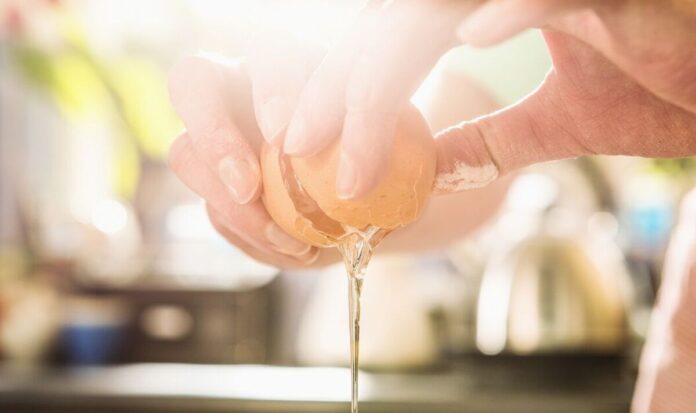Egg whites can be transformed into a material capable of filtering both microplastic pollution and salt out of seawater, researchers from the US have found. The proteins in egg whites can be used to form a so-called aerogel – a type of lightweight and porous material with various potential applications. These can range from water filtration and energy storage through to both sound and thermal insulation.The path to the breakthrough actually began with an entirely different food, explained paper author and material scientist Professor Craig Arnold of Princeton University in New Jersey.He said: ‘I was sitting there, staring at the bread in my sandwich – and I thought to myself, this is exactly the kind of structure that we need.’Accordingly, Prof. Arnold and his colleagues set about making different breads mixed with carbon to see if they could produce the kind of aerogel structure they were looking for.As none of the initial recipes worked, the team started to eliminate ingredients as they tested, until only egg whites remained – and fit the bill perfectly. Egg whites can be made into a material for filtering both microplastic pollution from seawater (Image: Getty Images) It is estimated that there are 24.4 trillion pieces of microplastic polluting the world’s oceans (Image: Getty Images)Prof. Arnold added: ‘We started with a more complex system and we just kept reducing, reducing, reducing, until we got down to the core of what it was.’It was the proteins in the egg whites that were leading to the structures that we needed.’The team explained that when the complex system of almost pure proteins that make up egg whites are freeze-dried then heated up to 1,652F (900C) in an oxygen-free environment, they create a structure of interconnected strands of carbon fibres and graphene sheets.This material is capable of removing both salt and microplastics out of seawater with an efficiency of 98 and 99 percent, respectively.READ MORE: Energy breakthrough as scientist create new transparent window coating The team freeze-dried and then heated the proteins from egg whites (Image: Ozden et al. / Materials Today) Pictured: SEM images of the aerogel surface (top) and interior (bottom) (Image: Ozden et al. / Materials Today)Paper author and Dr Sehmus Ozden of the Aramco Research Center added: ‘The egg whites even worked if they were fried on the stove first, or whipped.’While the team used regular, store-bought egg whites in their initial tests, Dr Ozden explained that other, similar, commercially-available proteins also yielded similar results – meaning that the material could be produced cheaply and at scale without impacting the food supply.Prof. Arnold added: ‘Eggs are cool, because we can all connect to them and they are easy to get.’However, he added, ‘you want to be careful about competing against the food cycle.’DON’T MISS:Major cable cut in France just hours after Shetland incident [REPORT]National Grid unlocks ‘record breaking’ energy milestone [INSIGHT]Golden asteroid worth £9 quadrillion targeted by NASA [ANALYSIS] The structure of the aerogel is formed by graphene sheets stretched across carbon fiber networks (Image: Shaharyar Wani)With their initial study complete, the researchers are now looking to refine their material fabrication process so that it could be used for large-scale water purification.According to the team, their material is not only effective and cheap to produce but also energy-efficient – requiring only gravity to work, unlike alternative techniques like reverse osmosis, which requires a significant energy input.Dr Ozden added: ‘Activated carbon is one of the cheapest materials for water purification. We compared our results with activated carbon, and it’s much better.’Furthermore, Prof. Arnold explained, the material may have other uses before water filtration – with the team presently exploring applications relating to energy storage and insulation.The full findings of the study were published in the journal Materials Today.
Egg whites can make material to filter microplastics from seawater
Sourceexpress.co.uk
RELATED ARTICLES


